
Woodlouse wizard
Less common species
Your woodlouse is not on the seashore, can not roll into a ball, does not have a dark stripe down its back and is not shiny.You may have found a less common species of woodlouse. Look at these descriptions and decide if they match your woodlouse:Porcellio dilatatus Has a round tip to the telson.
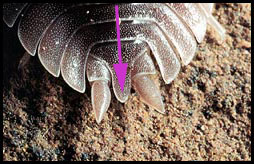
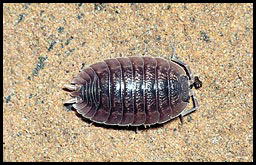
| Maximum length: |
15mm |
| Usual habitat: | Wide range of land habitats. |
| Known distribution: |
Scattered records throughout UK. |
| Scientific name: | Porcellio dilatatus |
Androniscus dentiger - rosy woodlousePink with a double yellow stripe down the centre of the body.
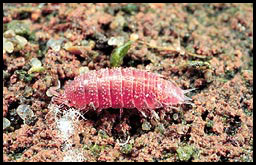
| Maximum length: |
6mm |
| Usual habitat: | Large variety of sites, including coast, garden rubble, old quarries. |
| Known distribution: |
Widespread and common. |
| Scientific name: | Androniscus dentiger (Rosy woodlouse) |
Porcellionides pruinosus
Runs extremely fast and erratically when disturbed.
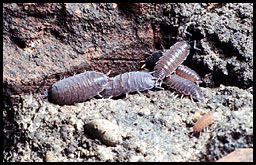
| Maximum length: |
12mm |
| Usual habitat: | Dungheaps. |
| Known distribution: |
Most parts of Britain, with most records from east. |
| Scientific name: | Porcellionides pruinosus |
Trachelipus rathkei
Has five pairs of lungs which can easily be seen by naked eye.

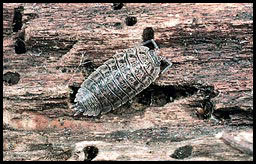
| Maximum length: |
15mm |
| Usual habitat: | wide range of habitats. |
| Known distribution: |
south-east of England and midlands. |
| Scientific name: | Trachelipus rathkei |
Platyarthus hoffmannseggi
Probably feeds on pellets regurgitated by its ant hosts.
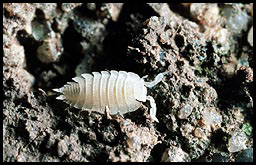
| Maximum length: |
4mm |
| Usual habitat: | In and around ant nests. |
| Known distribution: |
Common in south, less so in north. |
| Scientific name: | Platyarthrus hoffmannseggi |
If you have reached this part of the web site, you may still be unsure about the identity of your woodlouse. There are other kinds of woodlice found in the UK, but to identify them you need to refer to the Field Study Council key. If you do not wish to purchase the book, ask your local library to order it for you.
Go back
Go to the beginning of the key